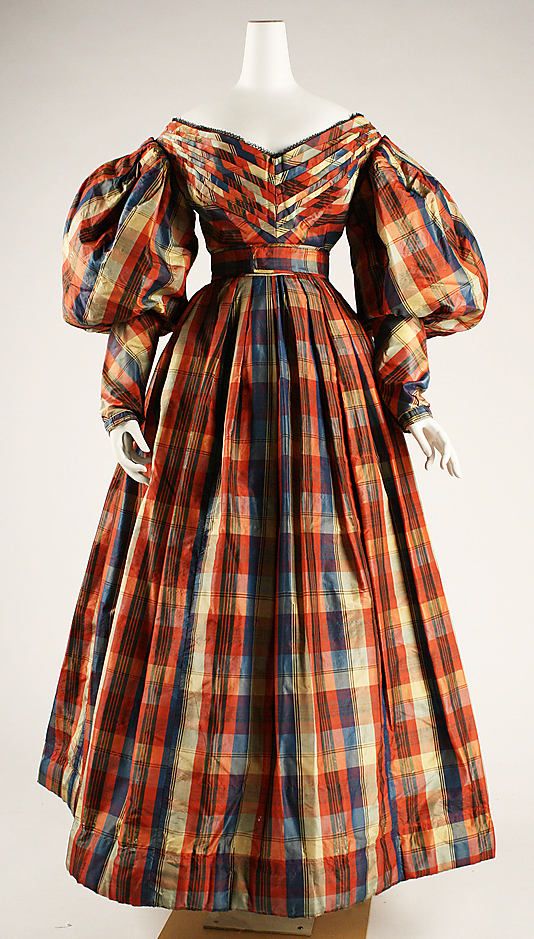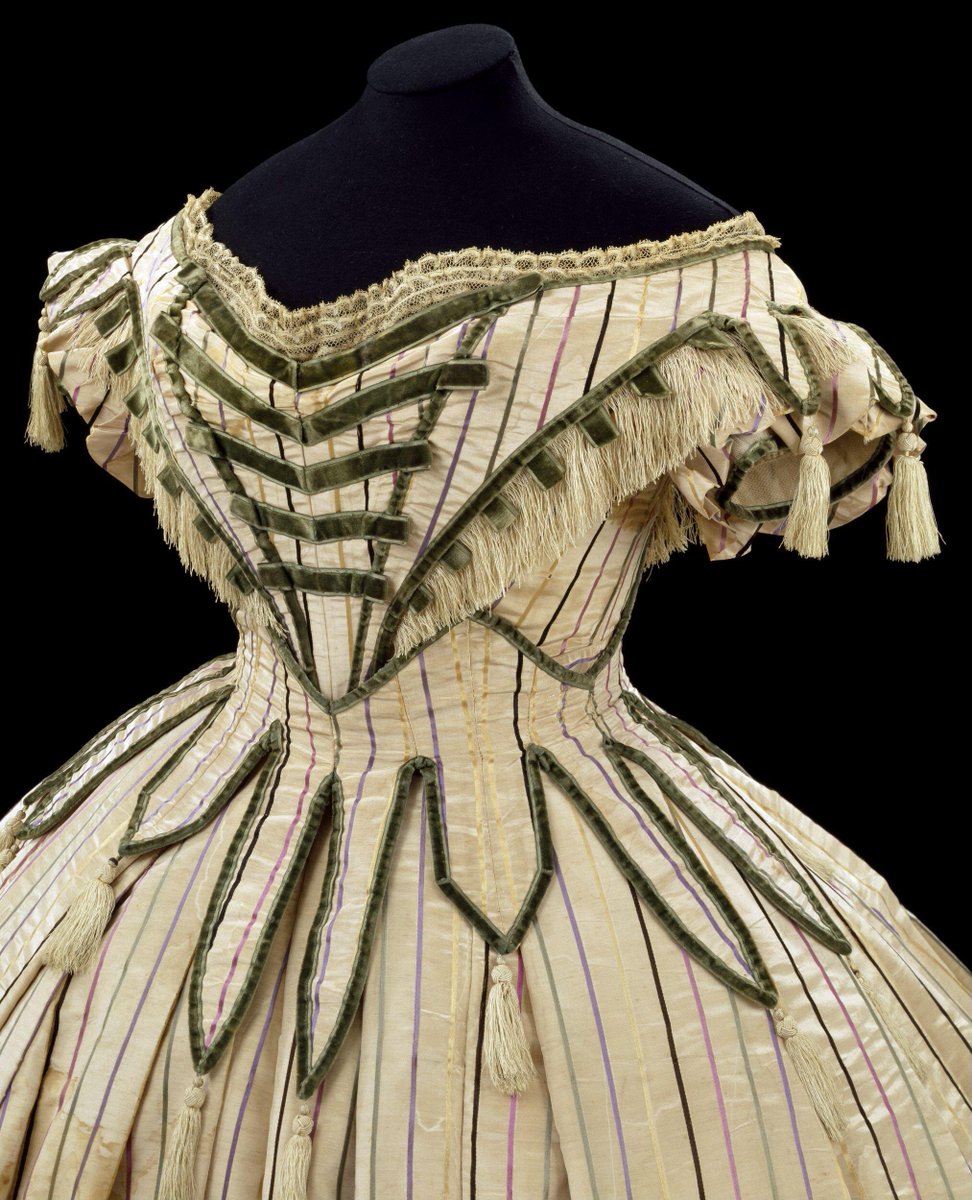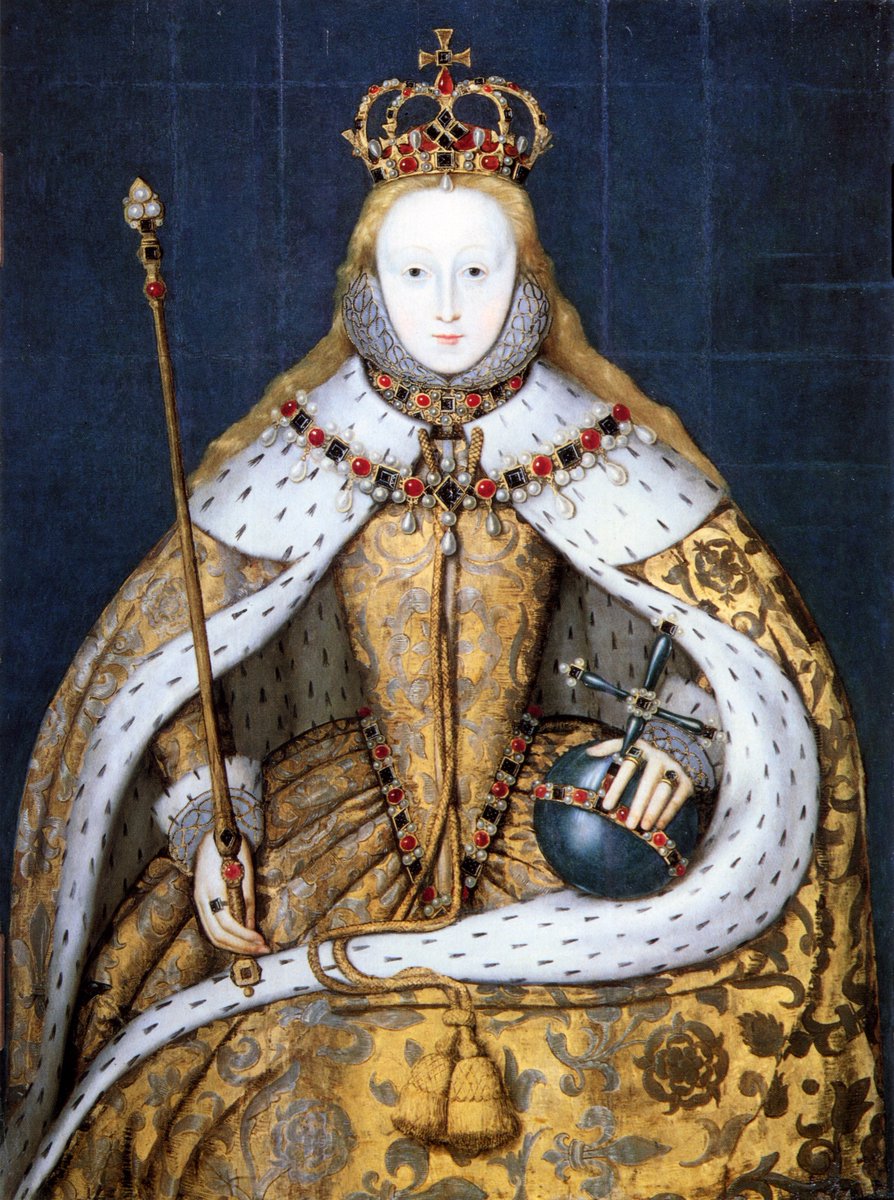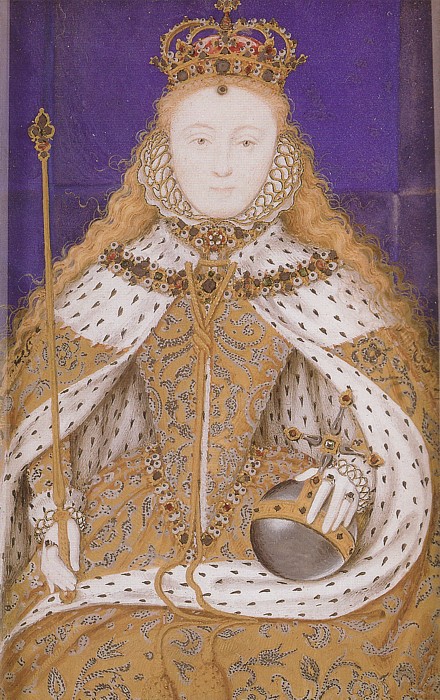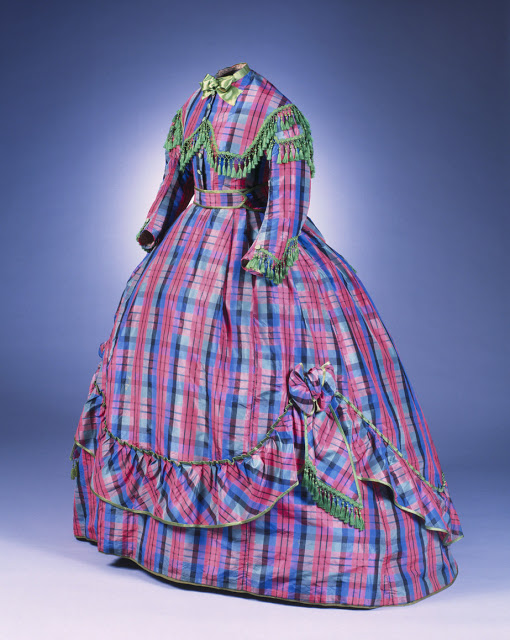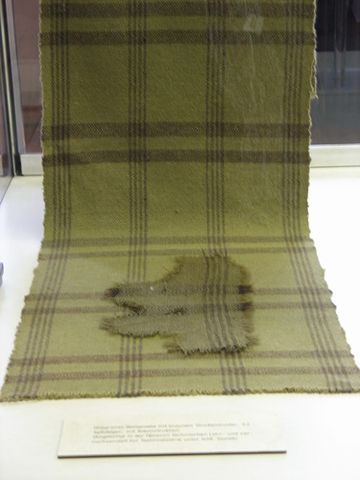Discover and read the best of Twitter Threads about #ThreadTalk
Most recents (24)
1 - Dim the lights, grab the popcorn: #threadtalk is going to the (creepy) movies. 🎃🍿🥤
This special edition features a broad list of films that haunt, terrify & sometimes titillate--but always with style. Horror, musicals, cartoons (& odd Disney choices) we've got 'em all. 🔪

This special edition features a broad list of films that haunt, terrify & sometimes titillate--but always with style. Horror, musicals, cartoons (& odd Disney choices) we've got 'em all. 🔪


1 - 🎃 Welcome to #ThreadTalk! It's the spookiest month & we're jumping right in with a look at ghostly garb👻!
Thrills, chills & blood-curdling horrors await as we take a trip through history & ask the question: "Okay, but what would that ghost *actually* be wearing?" 🎃
Thrills, chills & blood-curdling horrors await as we take a trip through history & ask the question: "Okay, but what would that ghost *actually* be wearing?" 🎃

1 - It's time for #threadtalk! Today's topic, the Grand Dame of Damask: Anna Maria Garthwaite.
This silk icon has quite a tale, but so does her stomping ground of Spitalfields, London.
And beyond the frippery? The horrors of 18thC England: persecution, riots & taxes🕍🔪💷
This silk icon has quite a tale, but so does her stomping ground of Spitalfields, London.
And beyond the frippery? The horrors of 18thC England: persecution, riots & taxes🕍🔪💷

1 - Welcome to #ThreadTalk, #LaborDay edition. Our topic? Mills, Strikes & Textile Labor.
Buckle up, though. There is a distinct lack of dazzle today.
We're meeting the makers & laborers of apparel history--& how they lived & died for their craft.
Buckle up, though. There is a distinct lack of dazzle today.
We're meeting the makers & laborers of apparel history--& how they lived & died for their craft.

1 - Hey folks! It's a surprise #threadtalk on the medieval theme of the moment: #TheGreenKnight! I just had to come out of hibernation to talk about what I saw in the theater.
Velvet! Crêpe! CROWNS! Pentagrams! I've got you covered. Well, at least *partially*. 📗🪓
Velvet! Crêpe! CROWNS! Pentagrams! I've got you covered. Well, at least *partially*. 📗🪓

1 - Tonight's #threadtalk is a horse of a different color: green to be exact.
We'll talk emerald🟩, verdigris & olive🫒, too. Plus the connection between wallpaper, poison☠️ & privilege.
First: some color history back to our (literal) roots. (below, Redincote, 1786 - 1789)
We'll talk emerald🟩, verdigris & olive🫒, too. Plus the connection between wallpaper, poison☠️ & privilege.
First: some color history back to our (literal) roots. (below, Redincote, 1786 - 1789)
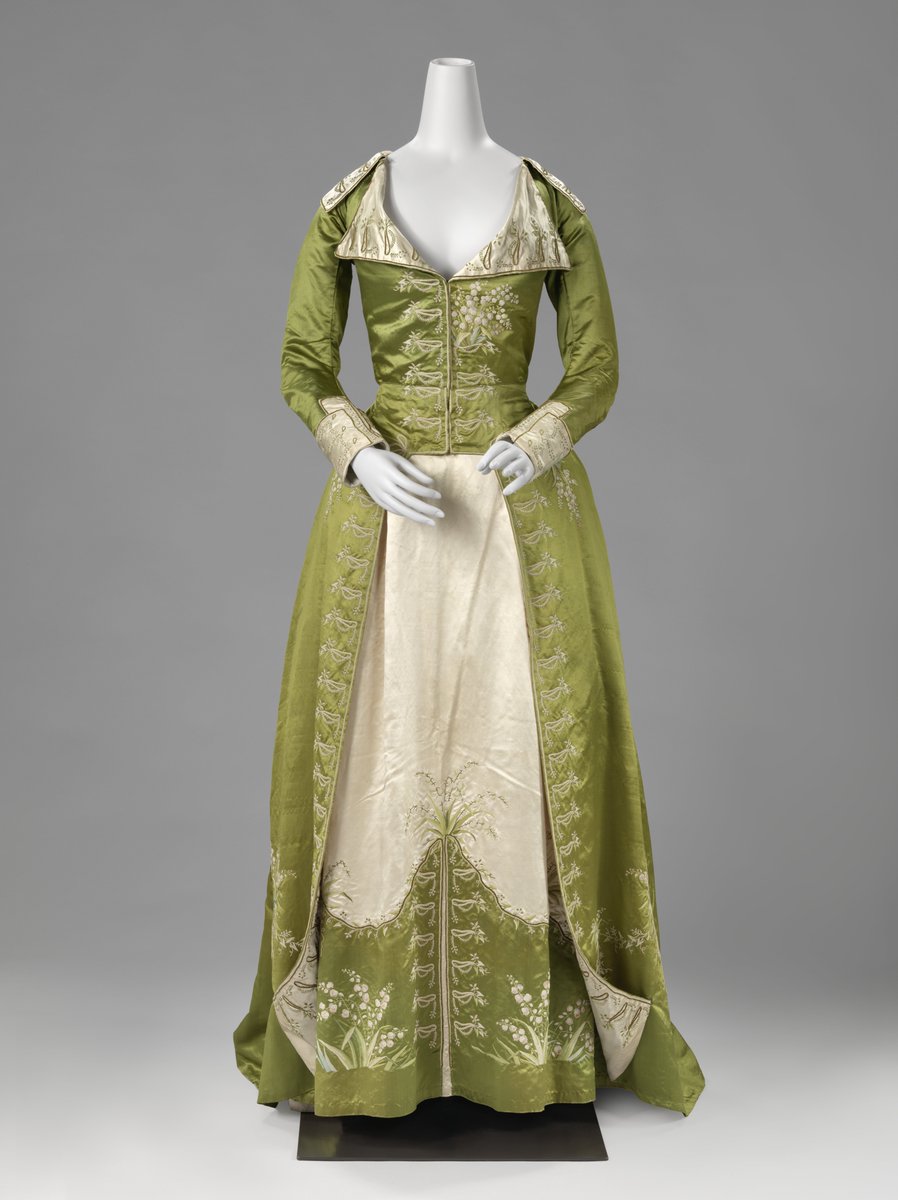
1 - Welcome to #ThreadTalk!
Ah, mawwiage. We're going nuptial.
💕If you're hoping for whimsy & romance, well... you probably haven't been here before.💕
For most of history, marriage has been about money & power, just like the fashion it's inspired. (Below, 1841, satin)
Ah, mawwiage. We're going nuptial.
💕If you're hoping for whimsy & romance, well... you probably haven't been here before.💕
For most of history, marriage has been about money & power, just like the fashion it's inspired. (Below, 1841, satin)

1 - It's Monday! That means it's #threadtalk time. But today we're doing a bit of a retrospective.
Somehow, I've done 16 of these already!
So get your bookmarks ready, we're about to do a #ThreadofThreadtalk.
Somehow, I've done 16 of these already!
So get your bookmarks ready, we're about to do a #ThreadofThreadtalk.

2 - First up is #chintz. You might think of it as your grandmother's cushions, but it's really a remarkable history that takes us to India and the history of print cotton.
We also get our first glimpse into sumptuary laws and MURDER.
We also get our first glimpse into sumptuary laws and MURDER.
3 - The Lure of Timeless #taffeta teaches us about "scroop" (the sound it makes) & brings a bit more insight past 80s prom gowns. I was surprised at how old taffeta is!
I adore the look & feel of taffeta, personally. And moiré is a personal obsession.
I adore the look & feel of taffeta, personally. And moiré is a personal obsession.
1 - It's time for #ThreadTalk & today we're swathing ourselves in the history of the kaftan!
Don't know your kaftan from your muumuu, dashiki, or Banyan? That's okay. We'll get there.
This ancient garment became a Regency staple🎩, a 1960s essential ☮️ & a modern must-have.🧥
Don't know your kaftan from your muumuu, dashiki, or Banyan? That's okay. We'll get there.
This ancient garment became a Regency staple🎩, a 1960s essential ☮️ & a modern must-have.🧥
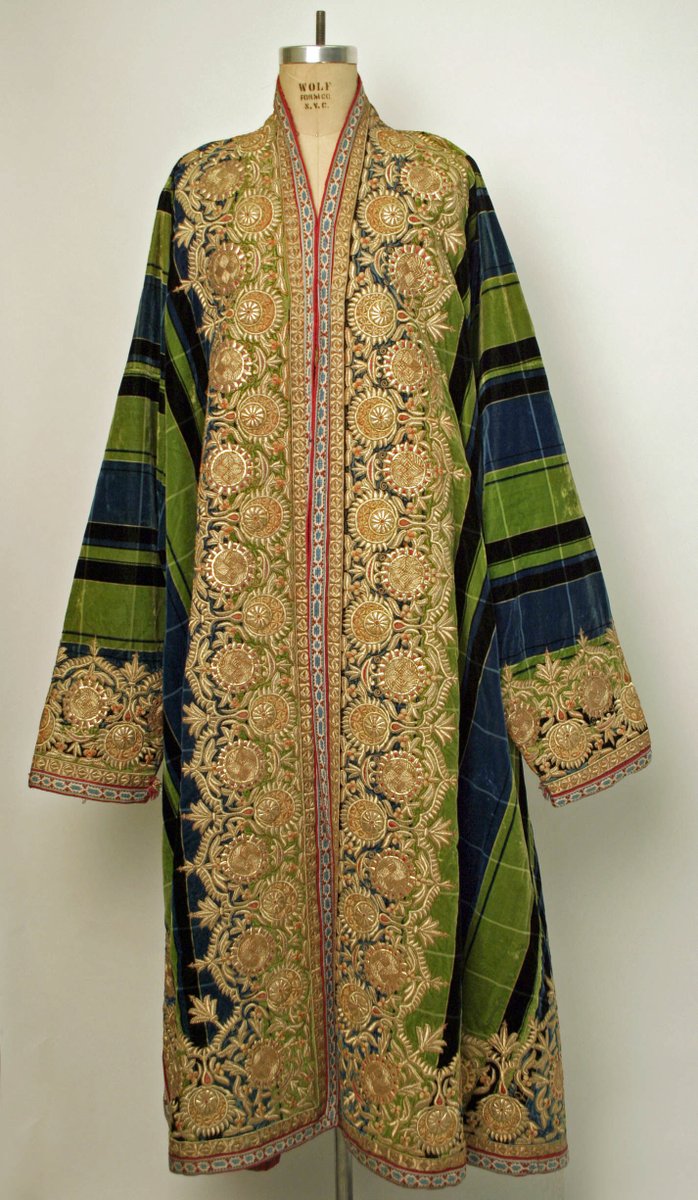
23 - I could do a whole thread on caftans, and maybe I should?
This caftan is from Turkey and dates from the 19th century, and y'all know I love gold and red. The stripes contain the floral pattern, and draw the eye up and around.
10/10 would wear right now. d
This caftan is from Turkey and dates from the 19th century, and y'all know I love gold and red. The stripes contain the floral pattern, and draw the eye up and around.
10/10 would wear right now. d

1 - Welcome to #ThreadTalk! This week we're talking stripes. And let me say, y'all have *opinions.*
Which is totally on brand for this pattern.
From the high seas🏴☠️ to the school yard🧑🎓, the red light district 🚨to the palace at Versailles🏰: Let's dive into the striped past.
Which is totally on brand for this pattern.
From the high seas🏴☠️ to the school yard🧑🎓, the red light district 🚨to the palace at Versailles🏰: Let's dive into the striped past.

1 - Welcome to #threadtalk, the first in my icon series.
Yup. It's gonna be ruff.
It's fitting that begin with the very monarch who signed the East India Company into being: Queen Elizabeth I.
Join me as we travel back to the 16thC to one truly warped family. 👑🧵🪡
Yup. It's gonna be ruff.
It's fitting that begin with the very monarch who signed the East India Company into being: Queen Elizabeth I.
Join me as we travel back to the 16thC to one truly warped family. 👑🧵🪡
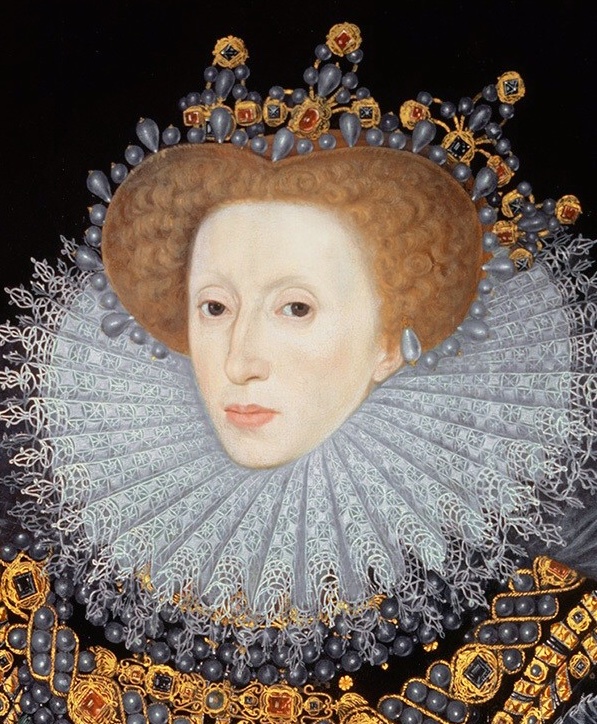
1 - Welcome to #ThreadTalk & gird your loins! We're talking skivvies, undies, unmentionables, lingerie🩲-- that's right: underwear.
Tonight we'll part the veil & to find what lies beneath. We've got witchcraft, weird myths & plenty of spice. 🔥 🔥 🔥
But first, mummies!
Tonight we'll part the veil & to find what lies beneath. We've got witchcraft, weird myths & plenty of spice. 🔥 🔥 🔥
But first, mummies!
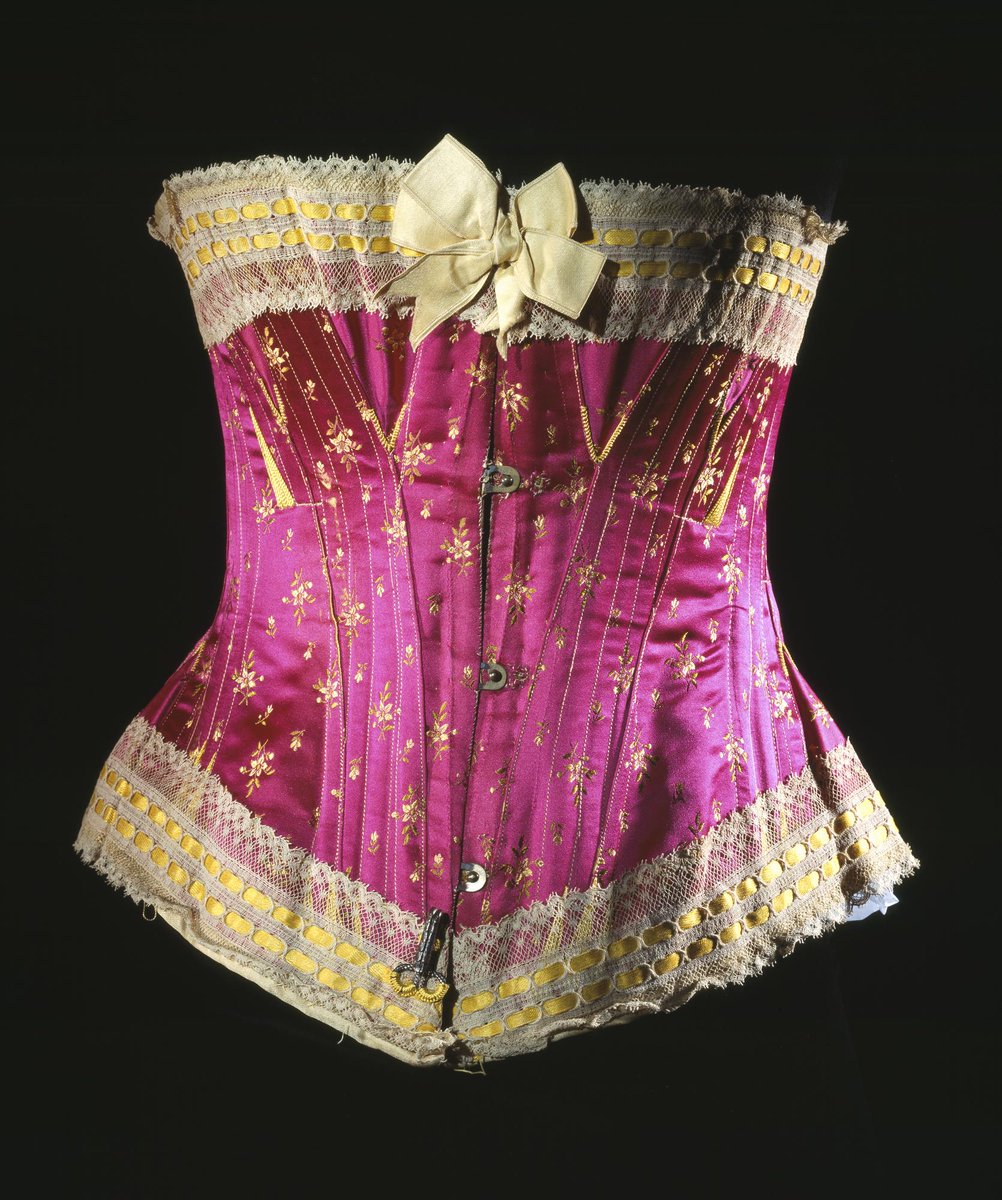
1 - Greetings, everyone. It's time for #ThreadTalk!
By popular demand, everything's coming up paisley.
#Paisley is an ancient motif with a Scottish name--to learn more about it, we'll be traveling the globe🌍, visit goats 🐐 & talk shit about the East India Company 🤬.
By popular demand, everything's coming up paisley.
#Paisley is an ancient motif with a Scottish name--to learn more about it, we'll be traveling the globe🌍, visit goats 🐐 & talk shit about the East India Company 🤬.

1 - Welcome to #ThreadTalk! Today we're tackling the venerable bead.
Don't be fooled: This. Subject. Is. Huge. 🤯
We're touring the world throug alchemy, biology, archaeology -- and learn how colonialism & slavery figures in.
Featured: Sioux (Teton) woman's dress from 1880.
Don't be fooled: This. Subject. Is. Huge. 🤯
We're touring the world throug alchemy, biology, archaeology -- and learn how colonialism & slavery figures in.
Featured: Sioux (Teton) woman's dress from 1880.

Just a very friendly reminder that I am a *fantasy novelist*.
I am not an academic.
I am not a journalist.
I write stories about magic, witches, monsters, and flirting. Often in sumptuous clothing.
I ask a lot of questions and share the answers I find.
I am not an academic.
I am not a journalist.
I write stories about magic, witches, monsters, and flirting. Often in sumptuous clothing.
I ask a lot of questions and share the answers I find.
I have no control over what goes viral. I want to keep up, but between my life and job and family, I can’t always. I hate that.
I also have ADHD. And depression. And anxiety. Some days Twitter is too much.
I’m totally ok, but just so y’all remember. I do this for free.
I also have ADHD. And depression. And anxiety. Some days Twitter is too much.
I’m totally ok, but just so y’all remember. I do this for free.
I don’t take sponsorships. I don’t do ads.
It’s just me, sharing my research deep dives.
If I miss a comment or a question, please know it’s not intentional.
I love doing #ThreadTalk and will continue to do it, but just putting this all out here.
It’s just me, sharing my research deep dives.
If I miss a comment or a question, please know it’s not intentional.
I love doing #ThreadTalk and will continue to do it, but just putting this all out here.
That said: also welcome to all my new followers!
I do #ThreadTalk every Monday. I've loved fashion since I could remember, but came to these deep dives through world-building my own fantasy novels (and historical fantasy).
Looking forward to learning more about you all.
I do #ThreadTalk every Monday. I've loved fashion since I could remember, but came to these deep dives through world-building my own fantasy novels (and historical fantasy).
Looking forward to learning more about you all.
I believe fabric culture makes us human, and it's often set aside for the blood, battle, and action.
Yet, I think it really brings us together in so many ways.
It's just that in the wake of colonialism and capitalism, we've lost our way a bit.
Yet, I think it really brings us together in so many ways.
It's just that in the wake of colonialism and capitalism, we've lost our way a bit.
In my early career as a writer, I was often snickered at for insisting that the best way into a world--imagined or historical--is understanding their fashion. Because fashion is frivolous and "girly" etc.
But think: Who has access to the goods? Who makes it? Who wears it?
But think: Who has access to the goods? Who makes it? Who wears it?
1 - Welcome to #ThreadTalk, muslin edition. Muslin has been all over my feed, so let me cut to the chase:
The finest fabric in human history was perfected by the Bengali people but tragically lost in the wake of imperialism & economic ruin at the hands of the English.
🤬🤬
The finest fabric in human history was perfected by the Bengali people but tragically lost in the wake of imperialism & economic ruin at the hands of the English.
🤬🤬
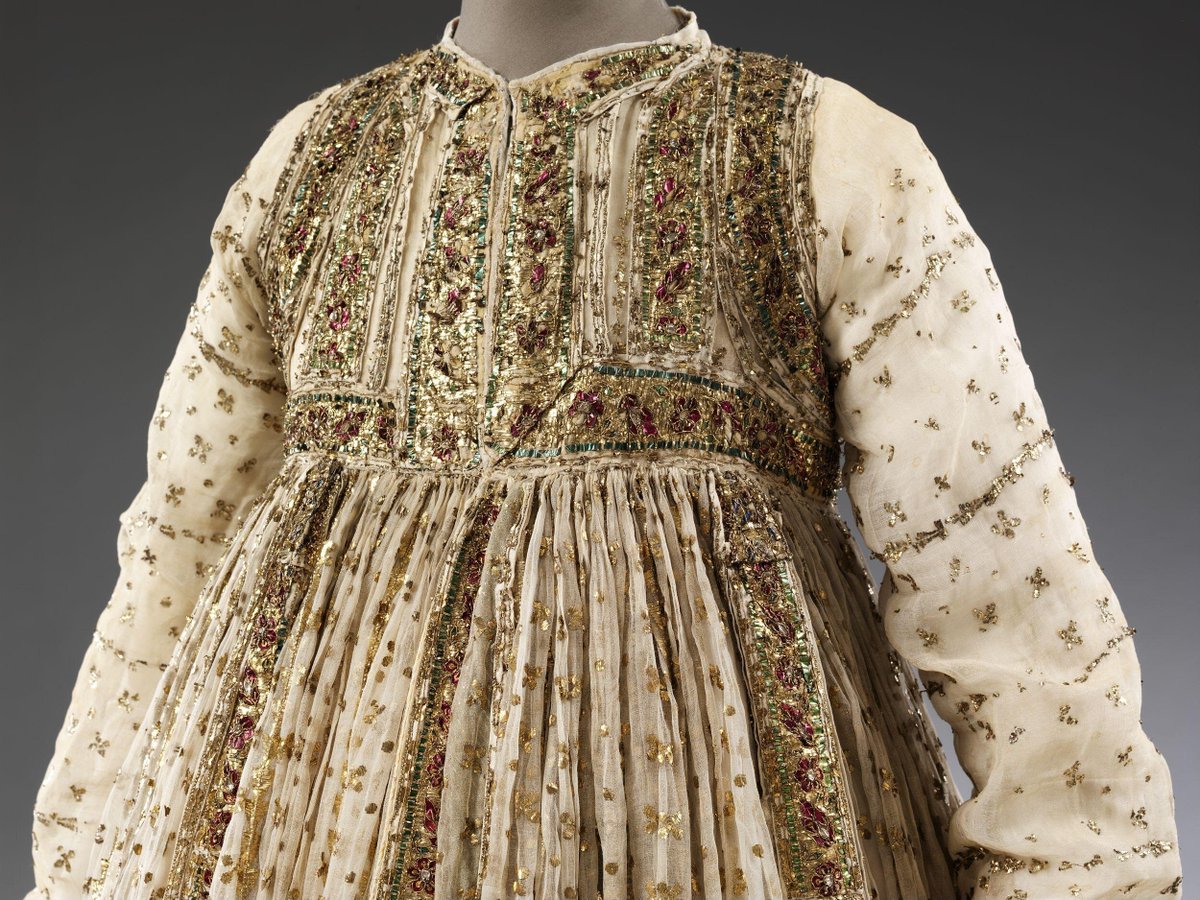
2 - Muslin was once called "The vapor of dawn" by a Chinese trader named Yuan Chwang. Other names were "woven wind" & "wonder gossamer" - yet it's now synomymous with Regency period dramas.
There's no way around this: it is not a happy story. But it's one people need to hear.
There's no way around this: it is not a happy story. But it's one people need to hear.
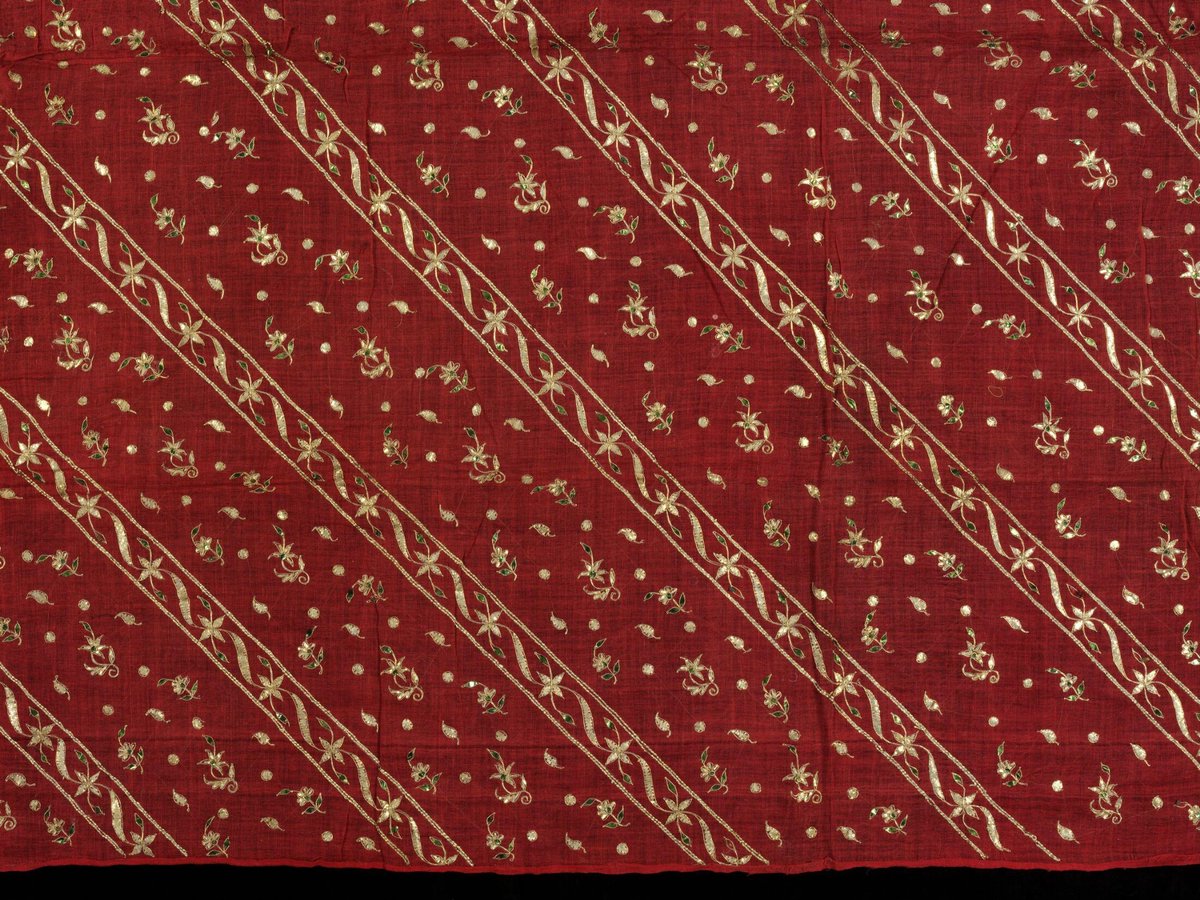
3 - In many ways, this is a companion thread to my original #chintz talk. Chintz and muslin are both made from cotton & both arose to fame b/c of the art, vision, & craft of Indian weavers.
Muslin is a basic plain weave, that means it's just a warp and a weft. But there's more.
Muslin is a basic plain weave, that means it's just a warp and a weft. But there's more.
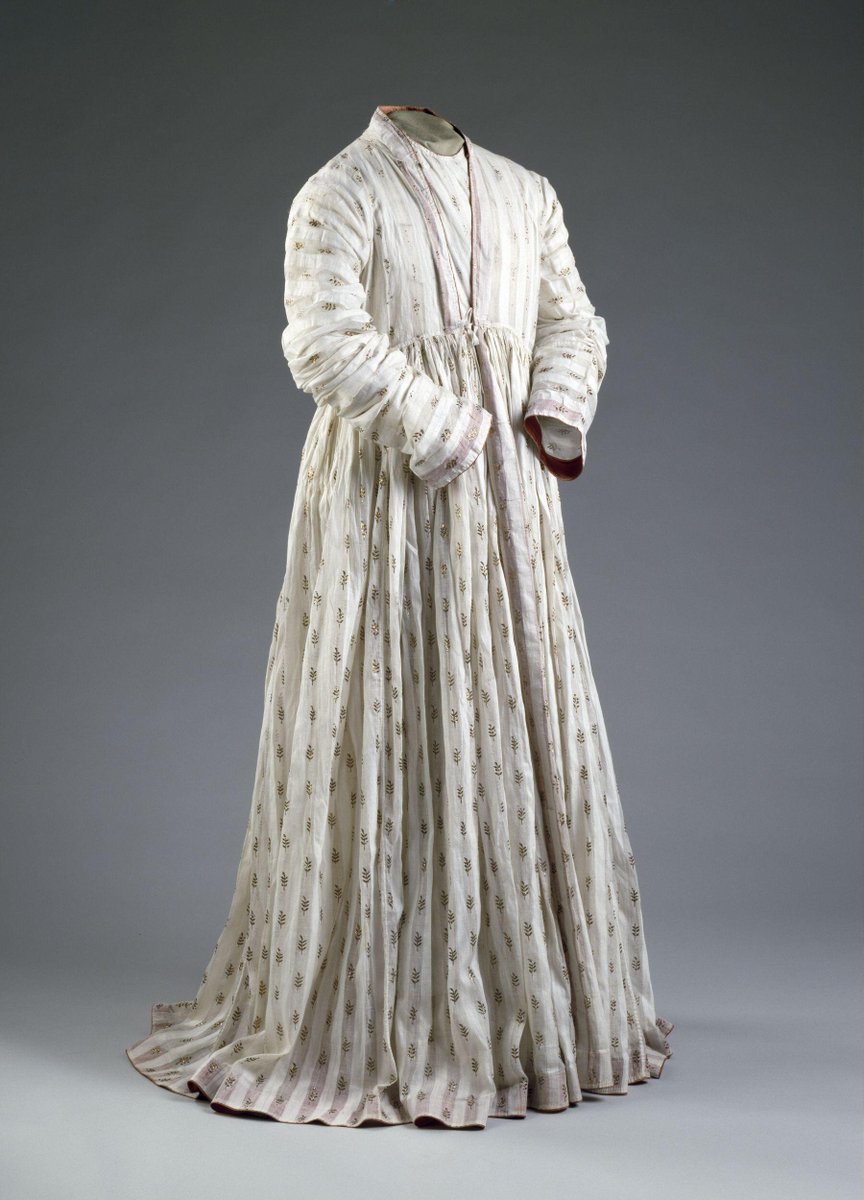
1 - It's time for #ThreadTalk. That's right: it's time to dye.
Warning: This feature includes insects🐞, poison☠️, dead bodies 💀, human combustion🔥 & general yuck🤢
And of course colonialism👎. But also gowns! Like this French afternoon dress in yellow & chartreuse from 1866
Warning: This feature includes insects🐞, poison☠️, dead bodies 💀, human combustion🔥 & general yuck🤢
And of course colonialism👎. But also gowns! Like this French afternoon dress in yellow & chartreuse from 1866

1 - Welcome to #ThreadTalk. This week’s subject: #embroidery.
This fabric art—both fine and folk — is a world heritage art, meaning its inception goes back before recorded times.
So tonight, I’m taking you on a tour around the world.
This fabric art—both fine and folk — is a world heritage art, meaning its inception goes back before recorded times.
So tonight, I’m taking you on a tour around the world.

1 - Welcome to tonight's #Treadtalk.
#Velvet may bring to mind 1970s couches, or your 90s goth stage, but that's a long way from its luxurious roots.
So let's brave the Black Plague, the cold, and questionable fashion choices together, in the name of this truly royal fabric.
#Velvet may bring to mind 1970s couches, or your 90s goth stage, but that's a long way from its luxurious roots.
So let's brave the Black Plague, the cold, and questionable fashion choices together, in the name of this truly royal fabric.

1 - Lace yourself, darlings. It’s about to get drafty in here. Welcome to my #ThreadTalk.
What began on the collars of Catholic clergy & adorned the pages of Frederick’s of Hollywood centuries later?
That’s right. Lace.
And #ThreadTalks go, lace is relatively modern.
What began on the collars of Catholic clergy & adorned the pages of Frederick’s of Hollywood centuries later?
That’s right. Lace.
And #ThreadTalks go, lace is relatively modern.

1 - Damask-erade, grinning yellows spinning reds,
Damask-erade! take your fill, let the spectacle astound you
Welcome to tonight's #ThreadTalk: Damask.
This fabric goes beyond musicals, creepy Victorian wallpaper & antique furniture. Let's follow the thread across the globe.
Damask-erade! take your fill, let the spectacle astound you
Welcome to tonight's #ThreadTalk: Damask.
This fabric goes beyond musicals, creepy Victorian wallpaper & antique furniture. Let's follow the thread across the globe.

1 - Welcome friends: it's TARTAN time! So plaid you're here.
This pattern probably brings to mind highlanders, private schools, & grunge music. But there's a lot more to it.
To understand tartan, we’ve got to go back further than you think. Back to Iron Age and to MUMMIES!
This pattern probably brings to mind highlanders, private schools, & grunge music. But there's a lot more to it.
To understand tartan, we’ve got to go back further than you think. Back to Iron Age and to MUMMIES!
